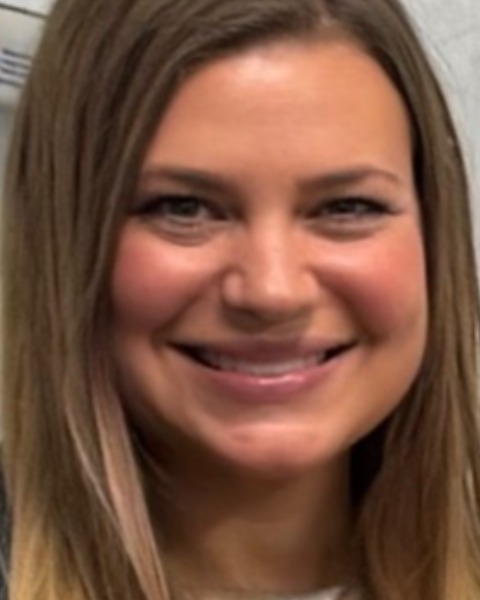Poster Presentation
Program Planning and Evaluation
Wednesday Evening Poster Reception
WED-114 - Partnering for Prevention: A Unique Way to Engage Parents in HPV Vaccination for Their Kids
Wednesday, April 16, 2025
6:00 PM - 7:00 PM PST
Location: Pacific I/II, 2nd Floor
Area of Responsibility: Area III: Implementation
Subcompetencies: 3.2 Deliver health education and promotion interventions., 3.3 Monitor implementation.
Research or Practice: Practice
Subcompetencies: 3.2 Deliver health education and promotion interventions., 3.3 Monitor implementation.
Research or Practice: Practice

Sherry L. Carlson, MPH, MCHES (she/her/hers)
Health Promotion and Education Manager
Washington State Department of Health
ROCHESTER, Washington, United States
Poster Presenter(s)
Learning Objectives:
At the end of this session, participants will be able to:
- Upon completion of this session, participants will be able to: Describe why the mailings were developed for parents and caregivers of 9-10 year olds.
- Upon completion of this session, participants will be able to: Specify two areas of health and safety guidance the 9-10 year mailing focuses on.
- Upon completion of this session, participants will be able to: Describe the effectiveness of the mailing intervention.
View the content of the materials created for the mailings.
Hear about the study methods and results.
Mounting research shows that the human papillomavirus (HPV) vaccine is most effective when given between 9-12 years old. In 2023, Washington State Department of Health shifted the routine age of HPV vaccination series to age nine instead of 11.
The intent of this project was to increase the number of 9–10-year-olds who initiated the HPV vaccine series by sending out special reminder recall letter to parents and caregivers. One month after the mailing was sent out, data from the intervention showed a 14% higher likelihood of a participant getting an HPV vaccination if mailed a letter compared to those who did not.
This study demonstrated the effectiveness of an innovative reminder recall strategy by reaching parents and caregivers through a trusted messenger and thus increasing the number of 9-10-year-olds with at least one dose of HPV vaccine.
Detailed abstract description: The intent of this project was to increase the number of 9–10-year-olds who initiated the Human Papillomavirus (HPV) vaccine series by partnering with the Watch Me Grow Washington (WMGW) program to send out a special newsletter. WMGW is a health promotion program that mails health and safety materials to all parents and caregivers in Washington state with a child ages 0-6 years old. This long-standing program is highly trusted by recipients as a credible source of health information. Recent program evaluation data shows that 83% of parents and caregivers indicated they took action because of the mailers, for example almost 50% of respondents noted they looked into a health topic more in depth.
For this mailing, we selected a randomized data set of 50,000 parents and caregivers whose children ages 9-10.5 years had not yet received HPV vaccination per the state immunization information system (IIS) and provided them education on a variety of health topics related to their child’s age, specifically highlighting the benefits of HPV vaccine.
Since parents and caregivers last received a mailing when their child was 6 years old, we introduced the new letter with “Hello, again! We’re excited to catch up with you! The last time you may have heard from us was when your child was 6 years old, which is when they graduated from the Watch Me Grow Washington program. We hope your child is continuing to grow up healthy and safe with regular health and dental checkups. You are receiving this letter because we’ve developed a new mailing focused on the HPV vaccine, and other information important to adolescent health. We hope you enjoy this special edition newsletter!”
Topics of the newsletter included: growth and development, sleep hygiene, HPV vaccine, screen time, internet safety, nutrition and physical activity, and bullying at school. In addition to the letter, three handouts were also included in the mailing packets – a brochure on puberty, a brochure on HPV, and an adolescent vaccination schedule.
Initial data analysis began at one month post mailing, where the intervention group showed a 14% higher likelihood of a participant getting an HPV vaccination if mailed a letter compared to those who did not. While data analysis is ongoing, preliminary results are encouraging. The WMGW program intends to continue tracking HPV vaccination rates amongst these two groups to determine if we see ongoing success from this invention. If successful, the program will expand mailings to all children in this age group and track progress towards this age groups vaccination rates overall. Additionally, we may consider seeking funding for other targeted interventions using the WMGW program.
This study demonstrated the effectiveness of an innovative reminder recall strategy by reaching parents and caregivers through a trusted messenger and thus increasing the number of 9-10-year-olds with at least one dose of HPV vaccine.
